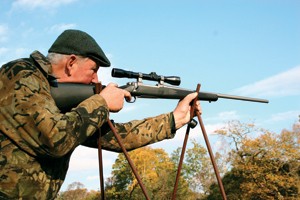The figures don’t add up

Recently the Home Office published figures of firearms and shotgun certificates in England and Wales during March 2008 about a year out of currency. This delay is not particularly helpful to us at BASC, as we use those figures to refute the more guns equals more gun crime argument touted by some of the more fundamentalist anti-gun groups.
The figures are also useful to spot trends nationally and regionally, which helps us to plan for the future. The fact that this data took nearly a year to be published is nothing when we look (or try to look) at the figures for 2006/7 there arent any. This is due to the changeover to the new computerised system, the National Firearms Licensing Management System (NFLMS), which was passed into law by the iniquitous 1997 Firearms (Amendment) Act, but which took 10 years or so to be implemented. Can you imagine for a minute what would happen to a registered fi rearms dealer who didnt keep records of his guns for a year because he was changing his recording systems? Prosecution and revocation no doubt about it. I know the NFLMS wasnt designed to provide statistics initially, but one thing computer systems are good at is counting.
The NFLMS was built by Anite plc, which is clearly so proud of producing this national computer system that there is no mention of it on its website. It might also amuse you to know that the original acronym for the system was FLIMSY (Firearms Licensing Management system), but that was changed to
NFLMS (I cant imagine why). So, what was the NFLMS designed to do? Well, the 1997 Firearms (Amendment) Act states that there should be a central register of anyone who has applied for or had a firearms or shotgun certificate granted or renewed. It says nothing about people who have had one refused or revoked, which tells you about the mindset of the Government, which clearly thought that the law-abiding shooter was the greater danger. It was decided that the system could cover all firearms and shotgun licensing and would be common to all police forces in England and Wales.
“The last published figures showed that they did not seem to know what nearly a quarter of those guns were.”
Eventually, this is what we got I say we because, as usual, the public paid for it. So has the new system enhanced the Home Office figures? It would appear not. Certainly they havent been produced more quickly, taking a year to be published as opposed to the eight months or less it took in the days of pen, paper and typewriter prior to 2006/7. Neither are they more detailed. There are no figures for the number of guns held on certificates (a figure that had been published since 1995), and as a result you can hardly expect them to publish what types of gun those might be. This is probably a relief, though, as the last published figures showed that they did not seem to know what nearly a quarter of those guns were. Rifles, Section 1 shotguns, handguns (pistols, as we adults call them) and muzzle-loading handguns are all listed, but 22.6 per cent of the total were recorded as other types of firearm.
As for how useful these figures are, for years weve been asking how many people hold certificates in other words, how many legal shooters are there in England and Wales. Since the records began, the Home Offi ce has only published the total number of certificates, which is useful but limiting as some shooters hold both firearms and shotgun certifi cates. We had hoped that this year wed fi nally get to know how many shooters there were in England and Wales. No such luck. More worrying still was inaccuracy. Within minutes of publication of the latest data it became clear to me that there were some glaring anomalies and errors in the document.
I contacted the Home Office immediately and they moved very fast once they had confirmed that what I had said was correct. They published a second edition within a day and its this that is posted on its website now. I still have some reservations about some figures, but Im informed that they have now been double-checked and should be okay. So, in essence, all you get for your money is worse data, later. In defence of the Home Office, its likely that the coming year will show a considerable improvement. There are some good people there and I have asked for a meeting with various interested parties in the near future. The response so far has been very encouraging.








